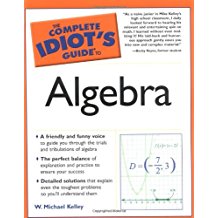Algebra: Living Large with Scientific Notation
Living Large with Scientific Notation
One very practical application of exponents is their use in scientific notation, a method used to express numbers that are extremely large or extremely small.
Have you ever owned a Rubik's Cube? It's a little puzzle with six differently colored sides. According to the manufacturer, there are 43 quintillion different possible moves (all of which I have probably tried, unsuccessfully, to solve it). In case you don't know how many a quintillion is (I had to check it myself), here's the number: 43,000,000,000,000,000,000. On the other hand, here's what it looks like in scientific form: 4.3 1019; even though it's weird-looking, it's a heck of a lot shorter. In order to express a number in scientific notation, here's what you do:
Talk the Talk
You can use scientific notation to express numbers that are extremely large or extremely small. The end result of scientific notation is a decimal times the number 10, which is raised to an exponent that's an integer.
- Large numbers: Move the decimal place in the original number to the left, counting each digit you pass, until only one nonzero digit remains to the left of the decimal place. Write the smaller decimal (ignoring any 0's at the end) and add this to the end of it: " 10n", where n is the number of digits you passed.
- In the Rubik's example, there is no explicit decimal point, so imagine it falls at the very end of the number. You want to move it left until only the 4 remains to its left. To do so, you'll have to pass 19 numbers, hence its notation of 4.3 1019.
- Small numbers: In these cases, you'll have to move the decimal point to the right until exactly one nonzero digit appears to the left of the equal sign. Write the resulting decimal (without any 0s before or after it) and add this on: " 10-n"; n is once again the number of digits you passed.
You've Got Problems
Problem 4: Write in scientific notation:
(a) 23,451,000,000,000
(b) .00000000125
Example 4: Write in scientific notation: .0000000000372.
Solution: Since this is a very small number, move the decimal to the right until there's exactly one nonzero digit (in this case 3) to the left of the decimal point: 3.72. In order to get that, the decimal must pass 11 digits (10 0s and the 3). Therefore, your final answer is 3.72 10-11. Don't forget that the exponent is negative for small numbers.

Excerpted from The Complete Idiot's Guide to Algebra © 2004 by W. Michael Kelley. All rights reserved including the right of reproduction in whole or in part in any form. Used by arrangement with Alpha Books, a member of Penguin Group (USA) Inc.
You can also purchase this book at Amazon.com and Barnes & Noble.







